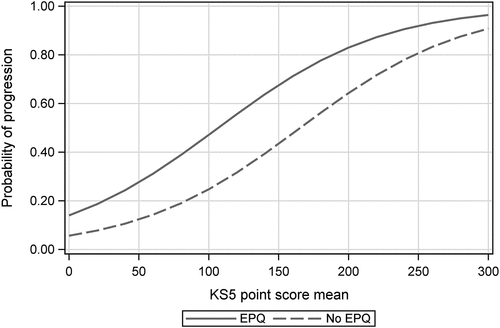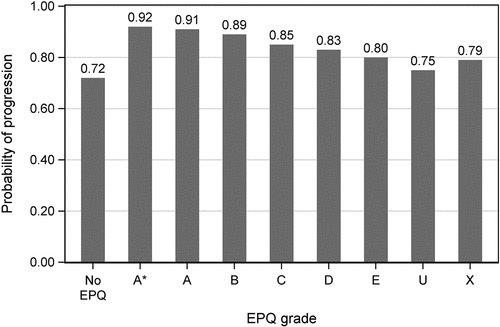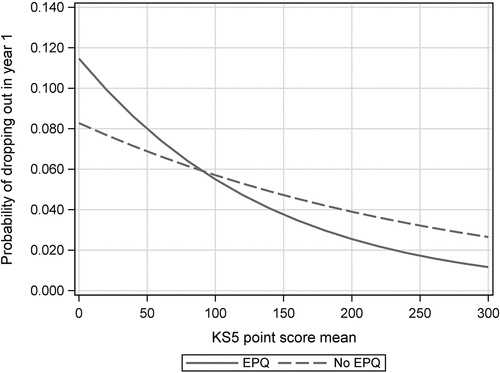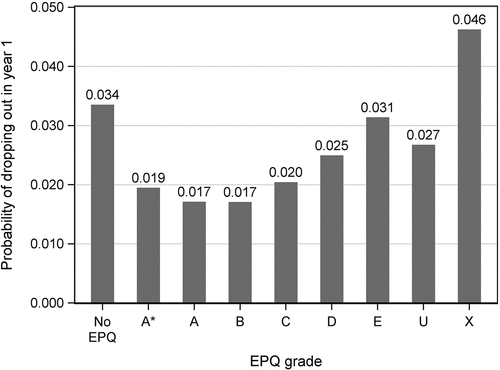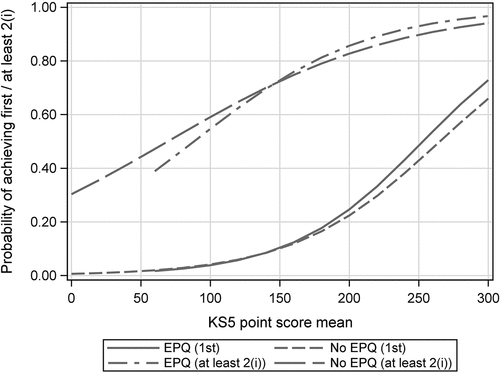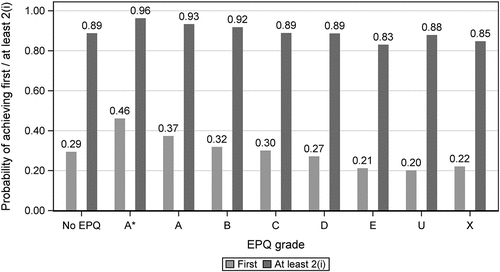Figures & data
Table 1. Number of students in KS5 cohort, split by school type, EPQ, and inclusion in regression models or not.
Table 2. EPQ and non-EPQ students progressing to HE.
Table 3. Students progressing to HE, by EPQ grade.
Table 4. Results of regression models, predicting the probability of progressing to HE.
Table 5. EPQ and non-EPQ students dropping out, by year started HE.
Table 6. Drop-out rate by EPQ grade (year 1).
Table 7. Results of regression models, predicting the probability of drop-out from HE in year 1.
Table 8. Degree class distribution for EPQ and non-EPQ students.
Table 9. Achieving a first, by EPQ grade.
Table 10. Results of regressions models, predicting the probability of achieving a first and at least an upper second-class degree.

